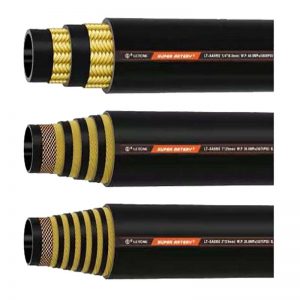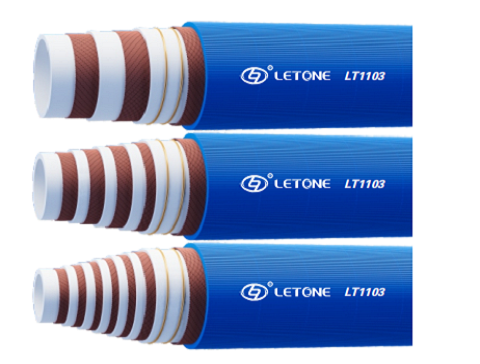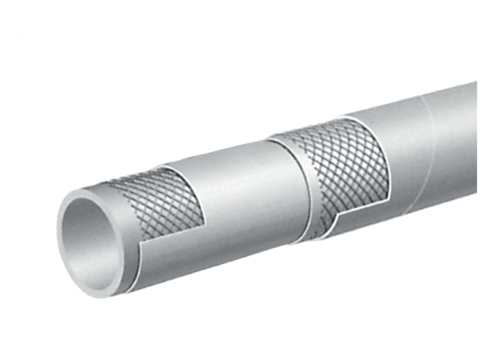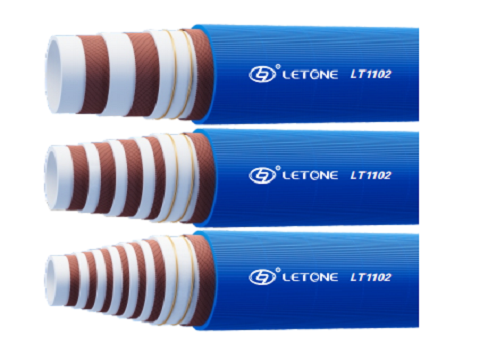Introduction:
Hydraulic hoses are essential components in various industries, providing crucial connections for fluid power transmission. Ensuring the structural integrity and leakage prevention of these hoses is of utmost importance. One method employed to enhance their durability is wire wrapping. This article delves into the process, benefits, and considerations associated with wire wrapping hydraulic hoses.
I. Understanding Wire Wrapping:
Wire wrapping involves the tightly winding of steel or stainless-steel wires around a hydraulic hose. This process reinforces the hose, offering increased strength and resilience. The wire wrapping is typically applied to the exterior surface of the hose, securely holding it in place.
II. Benefits of Wire Wrapping:
1. Improved Resistance to External Forces: The wire wrapping provides additional protection against external pressures, such as impacts and abrasions. This prevents damage to the hydraulic hose and extends its service life.
2. Enhanced Burst Resistance: The wire wrapping significantly increases the burst pressure rating of the hose, reducing the risk of bursts or leaks under high-pressure conditions.
3. Added Flexibility: Contrary to popular belief, wire wrapped hoses maintain their flexibility. The wire wrapping adapts to the hose's movements, ensuring smooth operation without compromising durability.
4. Resistance to Corrosion and Degradation: The use of stainless-steel wire significantly enhances the hose's resistance to corrosion from external factors, making it suitable for harsh environments.
 III. Considerations when Wire Wrapping:
1. Proper Wire Gauge Selection: The choice of wire gauge depends on the hydraulic hose's size, application, and required strength. Consultation with experts or referring to industry standards is recommended to ensure accurate selection.
2. Precise Wire Placement: The wire must be evenly and tightly wrapped around the hose. Any gaps or loose sections can compromise the effectiveness of the wire wrapping and its protective properties.
3. Compatibility with Fittings: It is essential to consider the compatibility between wire wrapped hoses and fittings, ensuring a proper seal and connection. Compatibility issues may arise due to the increased hose diameter caused by wire wrapping.
4. Professional Installation: Wire wrapping is best executed by experienced professionals familiar with industry guidelines and standards. Their expertise ensures optimum results and maintains the integrity of the hydraulic system.
Conclusion:
Wire wrapping is a proven method for reinforcing hydraulic hoses, providing numerous benefits that enhance their durability and performance. When properly executed, it effectively protects hoses from external forces, increases burst resistance, and maintains flexibility. Attention to detail during the wire wrapping process, knowledgeable gauge selection, and professional installation are all crucial in achieving optimal results. By prioritizing wire wrapping as part of hydraulic system maintenance, industries can improve safety, minimize downtime, and extend the lifespan of their hoses
III. Considerations when Wire Wrapping:
1. Proper Wire Gauge Selection: The choice of wire gauge depends on the hydraulic hose's size, application, and required strength. Consultation with experts or referring to industry standards is recommended to ensure accurate selection.
2. Precise Wire Placement: The wire must be evenly and tightly wrapped around the hose. Any gaps or loose sections can compromise the effectiveness of the wire wrapping and its protective properties.
3. Compatibility with Fittings: It is essential to consider the compatibility between wire wrapped hoses and fittings, ensuring a proper seal and connection. Compatibility issues may arise due to the increased hose diameter caused by wire wrapping.
4. Professional Installation: Wire wrapping is best executed by experienced professionals familiar with industry guidelines and standards. Their expertise ensures optimum results and maintains the integrity of the hydraulic system.
Conclusion:
Wire wrapping is a proven method for reinforcing hydraulic hoses, providing numerous benefits that enhance their durability and performance. When properly executed, it effectively protects hoses from external forces, increases burst resistance, and maintains flexibility. Attention to detail during the wire wrapping process, knowledgeable gauge selection, and professional installation are all crucial in achieving optimal results. By prioritizing wire wrapping as part of hydraulic system maintenance, industries can improve safety, minimize downtime, and extend the lifespan of their hoses







